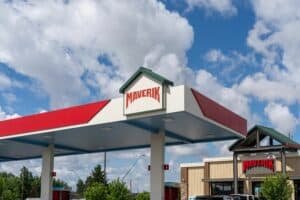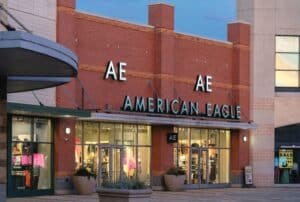
shmeljov/Depositphotos.com
November 6, 2025
Have Retail Loyalty Programs Moved Beyond Discounts?
While discounts and points still motivate participation in loyalty programs, softer perks – like exclusivity, early access, and VIP treatment – rank among the strongest loyalty drivers across generations, according to new research from GWI and Razorfish.
“These benefits make people feel seen, not just sold to, creating the kind of sticky loyalty that transcends price and promotion,” according to the study. The findings were based on interviews with 2,000 U.S. adults conducted from June 19 to July 2.
Asked which soft perks as part of loyalty programs had “high value or very high value,” the favorite perk among respondents was access to limited edition drops, cited by 30%; followed by invitation to exclusive events, 28%; and receiving exclusive content (behind-the-scenes content, product previews, etc.), also 28%.
The research found consumers actively participate in the programs they are a part of, with the goal of receiving points and rewards for their loyalty (57%). For 45% of respondents, the benefits of loyalty programs have become more valuable than they used to be.
According to Forrester’s Retail Topic Insights 2 Survey, 2024, financial rewards are the most important elements of loyalty programs to U.S. consumers. Of the U.S. adults surveyed, instant discounts, 76%; and loyalty currencies like points, miles, and stars, 74%; topped the list of important benefits in a loyalty program. However, consumers also found to value experiential rewards. Over half of U..S online adults believe enhanced customer service, offers tailored to their preferences, and the ability to earn and use points across different brands and to earn special status are also important.
John Pedini, Forrester’s principal analyst, wrote in a blog entry, “Members prioritize financial benefits regardless of region, but they also want a loyalty program that makes them feel special. B2C marketers can do this by providing members with exclusive access to benefits such as limited-release products, first access to deals, and member-only events.”
Is There a Generational Divide When it Comes to Retail Loyalty Programs?
A survey over 2,000 U.K. consumers earlier this year found 55% are more likely to join loyalty programs amid economic uncertainties. Of the respondents, 84% indicated discounts motivate them to join loyalty programs. However, 73% of Gen Z and millennials say experience-based rewards like early access to products, exclusive events, or opportunities to contribute to new product development motivate them to enroll.
Charlie Casey, CEO of LoyaltyLion, said: “This research shows that loyalty is about more than discounts. In uncertain times, shoppers are looking for value and security. Brands that treat loyalty as a relationship rather than a transaction will stand out.”
Discussion Questions
Are retail loyalty programs still largely driven by discounts?
Has including some experiential perks become an expectation?
What advice would you have around making loyalty programs less transactional?
Poll
BrainTrust
Chuck Ehredt
CEO, Currency Alliance
Pamela Kaplan
Principal, PK Consulting
Lisa Goller
B2B Content Strategist
Recent Discussions







Loyalty programs exist for two main purposes: to influence consumer behavior through incentives like discounts and points, and to collect data. They do not exist to foster genuine loyalty – as evidenced by the fact that most consumers belong to multiple programs, which rather defeats the idea of being truly loyal. That said, some of the softer benefits, such as invitations to exclusive or special events, can create goodwill that translates into spend – and they are seen as valuable by consumers. I’d still argue that this is not genuine loyalty, however.
I would submit that loyalty programs were never (just) “about discounts” …at least if they were done properly. (So the answer is “yes”, meaningless as that is in this context.)
Most loyalty programs aren’t true loyalty programs. They are marketing and discount programs that influence repeat business, not true loyalty. True loyalty comes from an emotional connection, so if the company/brand can create a program that triggers emotion, there is an opportunity to create true loyalty.
There’s nothing wrong with a program that encourages repeat business. However, if the program becomes personalized to the customer and offers meaningful rewards and benefits, there is a chance of an emotional connection that can convert an average transactional customer into a loyal customer.
The research data is directionally correct but strategically misleading. Yes, 30% value limited drops and 28% want exclusive events – but 76% still prioritize instant discounts. Loyalty programs have not evolved beyond offering discounts, but have instead raised the cost of playing the same game. The strategic trap is believing that adding emotional engagement to transactional mechanics transforms the relationship. True loyalty would mean customers stop optimizing. These programs prove they never do.
The challenge with these types of studies is this…not all industries or sectors of business are “equal”. Early access or discounts or points matter not for many operators of loyalty programs. We have evolved from points everywhere well isn’t that boring and very much transactional, to experiential rewards and access is the key and let’s not forget about charity and climate change/being a good steward of the earth. So the answer is this – design a program that resonates with your customers and that you can actually deliver outstanding operational success. Follow the path of make it easy to understand, easy to participate and easy to recommend to others. Points are not dead – consumers are generally lousy at math – they get it when you give them $5 back for every $100 spent. Likewise, a portion of any audience could care less about discounts, rewards and promotional offers – just show me that you know me and treat me to benefits that match my lifestyle and journey through life. This is why no program should follow a formula. You match the brand personae, the company culture and what their present as well as future state capabilities are to the market challenge – including what the competition is offering. Don’t copy them…offer something that beats them and they cannot easily match.
When it comes to driving sign-ups, I don’t see loyalty programs moving beyond discounts anytime soon. Those instant savings you get for joining are hard to pass up, even if experiential perks help with engagement later. For many shoppers, that upfront deal is still the main hook.
Sad but true, it’s all about Marketing (vs actual loyalty). Basically you can sum it up as “Come for the sign up discount, stay for the promotions, or not”
Thirty years ago, loyalty programs were used by airlines to lock in their customers and once they reached a certain level of engagement, they would rarely fly with a competitor. Today, programs have many different objectives – depending largely on the nature of the retailer, bank, or travel provider. In the past 5 years, brands like Sephora, Marriott, and Delta have figured out how to treat the majority of their customers in a special way that is more engaging because the customer feels like the brand is looking after their own best interests. Most programs, unfortunately, are still based on a transactional relationship: “You buy XX and we give you YY.” I belive every brand needs a loyalty strategy, but not every brand needs a points or discounting plan. I think the comments in this article related to loyalty programs being mostly related to discounts, is a US-centric view – as in other regions of the world, brands use their loyalty programs to avoid having to offer discounts – and that is a much less expensive way to acquire and retain customers.
Loyalty programs have always been about understanding your customers better to drive improved sales results.
The Tesco Clubcard Loyalty scheme celebrated its 30th birthday earlier this year and it has transformed considerably. From offering money off groceries it has offered money off days out and restaurant meals at a higher value for the customer.
More recently it has led to lower shelf-edge pricing for loyalty members on some items. This has been met with some controversy but it creates an even bigger incentive to sign up – as if the incentive has moved from ‘Carrot’ – in the form of reward vouchers – to ‘Stick’ – which are higher prices if you don’t sign up!!
Other players have moved into member specific pricing – with it potentially becoming the norm.
Yes, retail loyalty programs are still largely driven by discounts. The RetailWire discussion cites new research from GWI and Razorfish, which found that the majority of consumers continue to value savings mechanics such as instant discounts and points accumulation as their primary reason for joining and using loyalty programs. That said, the same research shows a meaningful shift in expectations: younger consumers increasingly look for experiential perks — things like exclusive access, early product drops, or member-only events — as part of what “loyalty” should feel like today.
Including experiential perks has, in many ways, become an expectation, especially among Millennial and Gen Z shoppers. However, the most powerful loyalty benefits are often not flashy experiences — they are service-based conveniences that make the retailer easier to shop. This includes free delivery from local stores, free or faster shipping on online orders, easy returns, priority pickup slots, and early access to key promotions. These are practical daily benefits that signal respect for the customer’s time — and they deepen engagement far more effectively than one-off discounts.
To make loyalty programs less transactional, retailers should shift the program’s center of gravity from “save money when you buy” to “shop easier and feel recognized when you engage.” Focus on benefits that reduce friction, reward participation across channels, and create a sense of belonging — not just price savings. When a loyalty program makes the shopping experience meaningfully better, loyalty moves from a discount-driven transaction to a relationship-driven habit — which is where long-term value is created.
Discounts and deals are a major draw for retail loyalty programs. Exclusive events, free delivery, early access to new products, free mini samples and bundled services like media also keep customers coming back.
Lifetime value and customer engagement. The best loyalty programs focus on those two metrics. Retailers should be hyperfocued on them, and every tactic, whether it’s a discount, a coupon, an event, or anything else the team can dream up, should be evaluated through the lens of how it will enhance value and engagement.
Not sure why we keep calling them ‘loyalty’ programs. They are bribes, pure and simple. Somebody offers a better bribe, and so long customers. ‘Loyalty’ programs based on discounts last as long as the discounts last. Or until somebody else offers a better discount. Aren’t they just simple ‘reward’ programs? I get rewarded for repeat purchases over time. The reward just might prevent me from shopping around and trying other brands. That’s not loyalty. I’m being bribed to stick around. Customer retention. Nothing wrong with that. It’s just not loyalty. If, as a retailer, I don’t offer a bribe of some kind, customers will go where they can get the bribe/reward. That’s not loyalty.
While the industry champions softer perks and experiential rewards as the future of loyalty, the reality is that most consumers remain fundamentally motivated by discounts and straightforward financial benefits. Brands overestimating the power of exclusivity risk alienating price-sensitive shoppers who prioritize value and convenience over VIP treatment.